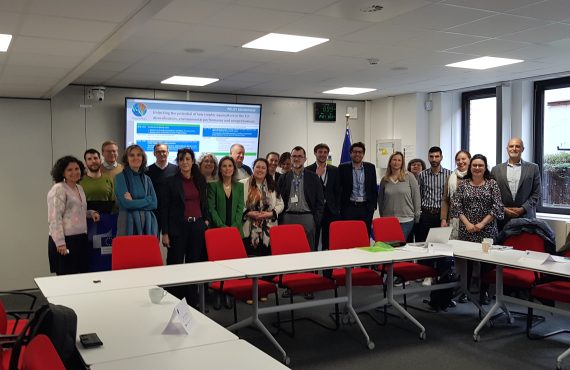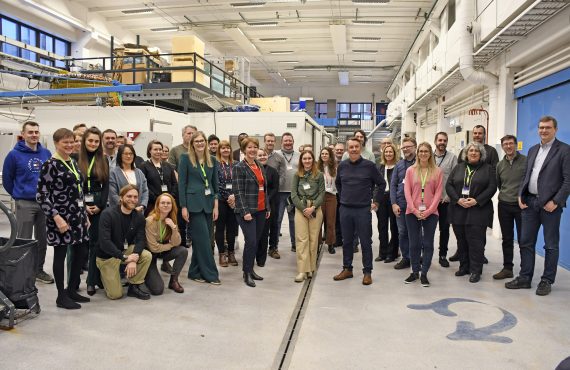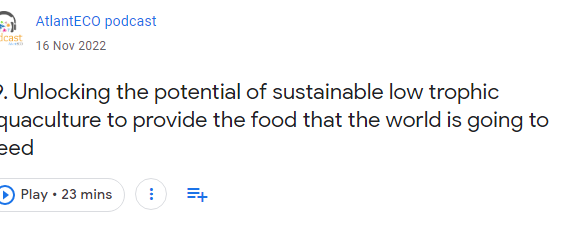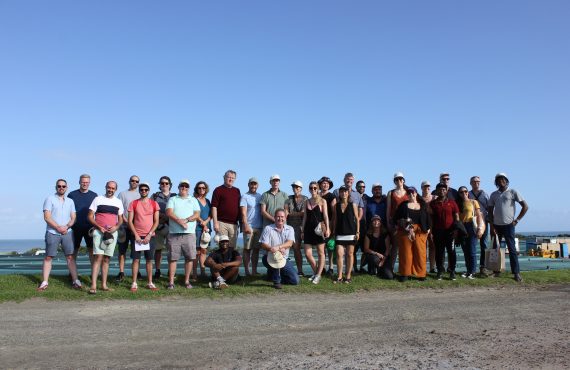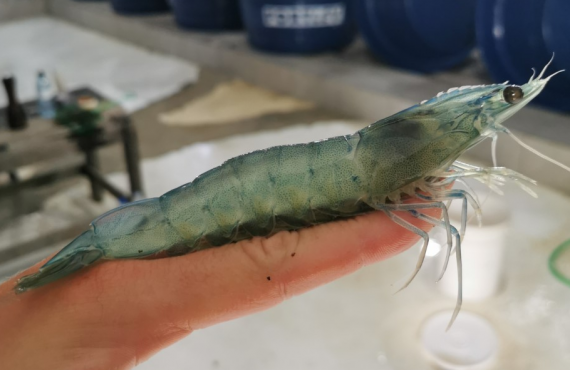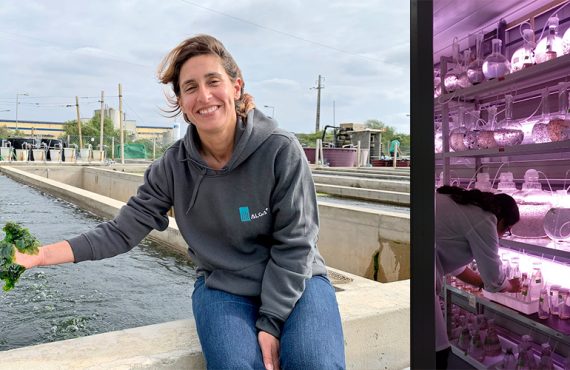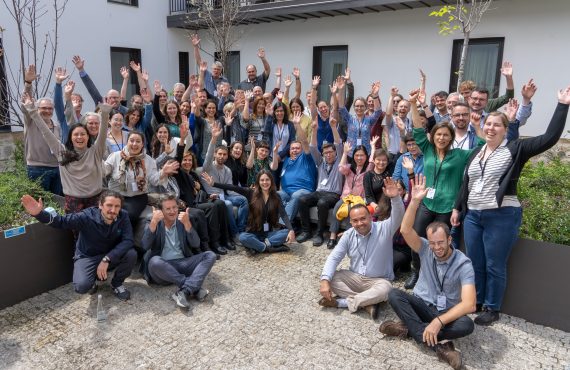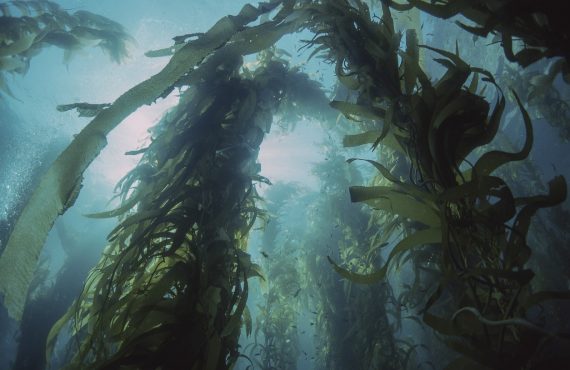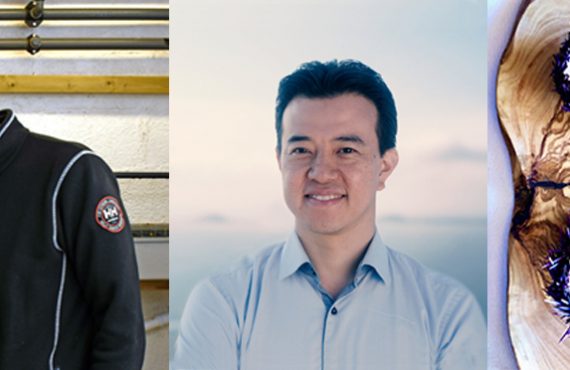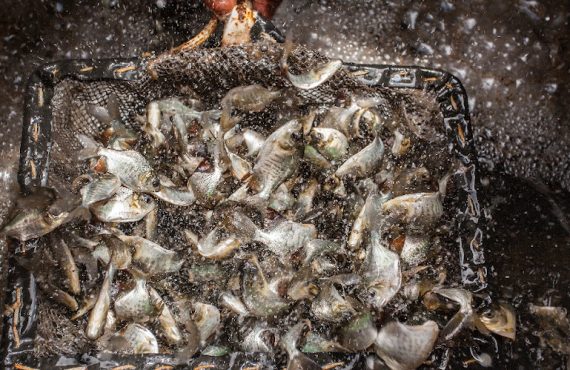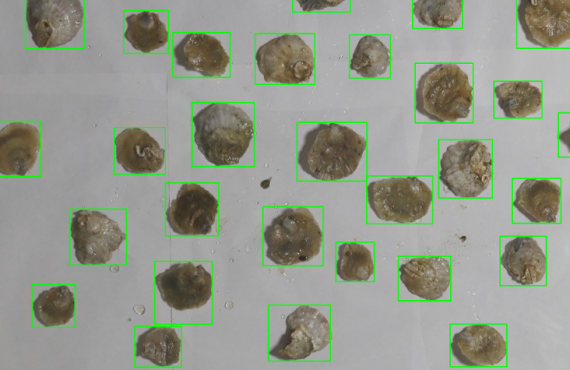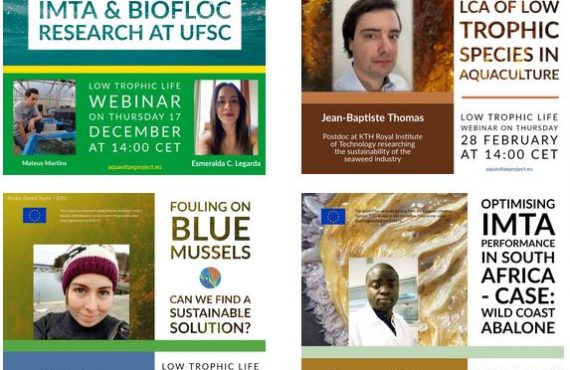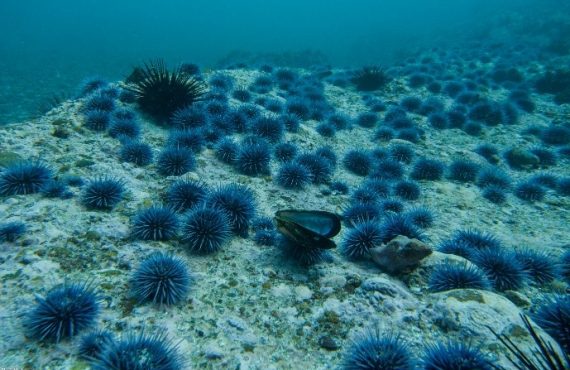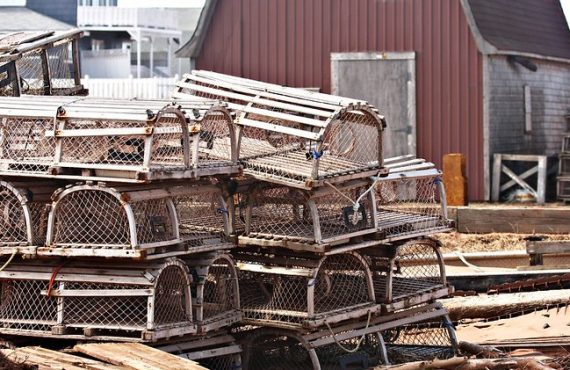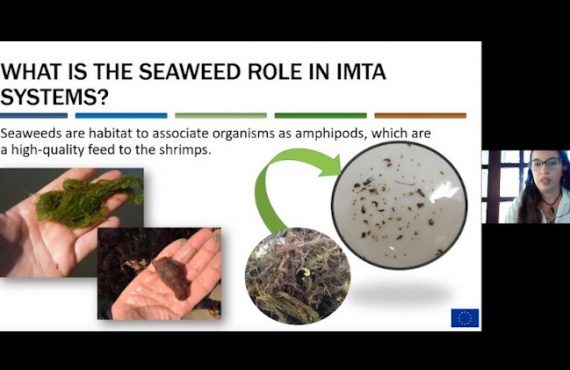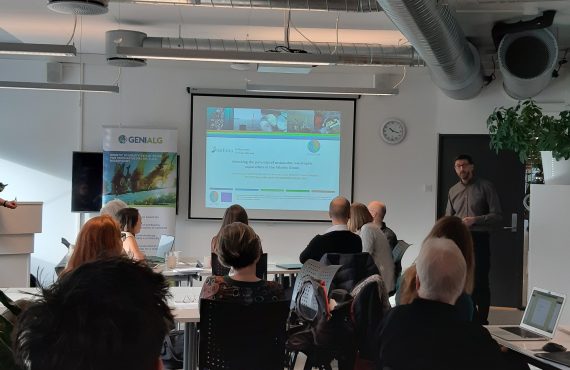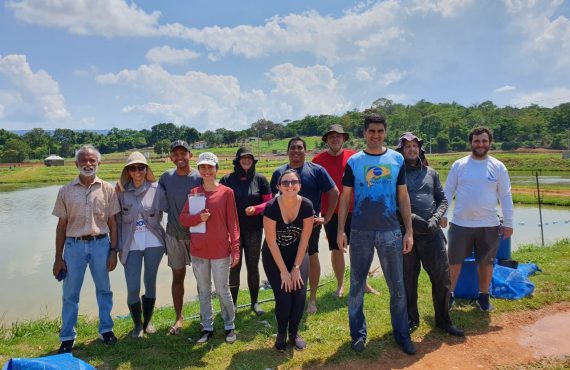On the left, a green sea urchin (Strongylocentrotus droebachiensis) under normal light; on the right, excitation lighting. Note the red exudate being produced by the urchin that is not visible in normal lighting. Photos: Thomas Juhasz.
By Thomas Juhasz, visiting AquaVitae PhD student at Nofima
Aquaculture is a poised to become the primary source of marine based nutrition globally. As the environmental effects of high trophic level aquaculture become more evident, greater emphasis is being placed on production with low trophic aquaculture species. Low trophic species include a wide array of invertebrates and finfish that primarily depend on plant or detritus-based feed. As many of these species are new to aquaculture, knowledge of their health and welfare is largely unknown.
I came to Nofima with the support of Phil James, AquaVitae´s coordinator, to determine whether the emerging field of biofluorescence can be used as a non-invasive method for identifying subclinical stress in such Iow trophic aquaculture species.
What is biofluorescence?
Biofluorescence is the absorption of electromagnetic radiation (light) by a fluorescent protein or a metabolite at one wavelength followed by its reemission at a lower energy and longer wavelength by a living organism.

Broken fluorescent spine tips
Biofluorescence itself is not a new topic, having been documented in the last decade in many fish families and certain invertebrates such as the mantid shrimp. As fluorophores, or fluorescent molecules, are produced within the animal itself, the production and expression of such molecules is thought to be maintained by the animal for various biological functions such as camouflage or intraspecific communication. A good example is the detailed study of catsharks whose fluorescence was documented to function at depth through a simulated shark eye built by the scientists.
Why use biofluorescence?
Biofluorescence may potentially be used in real world applications to identify stress before clinical signs manifest. Such an ability to monitor stress quickly without intrusive actions (dissection) or extensive laboratory analysis (time requirements) would greatly help reduce mortalities and improve welfare standards in the husbandry of low trophic species. Invertebrates, such as the green sea urchins studied at Nofima, do not have conventional early signs of stress that one would see in vertebrates. When clinical signs of stress manifest in sea urchins (i.e., drooped spines, spine drop, non-responsiveness to external stimuli), recovery from the stress inducer (water quality, temperature, pathogens, etc.) is difficult, if not impossible.
What have we learned so far?
Through trials with species as diverse as sea urchins, king crabs, and sea lice, we have found that biofluorescence is widespread in the North Atlantic Ocean. The biological function of biofluorescence is currently unknown for many species and may ultimately not have a specific function. However, the intent of this study is to use biofluorescence to monitor organism response(s) to environmental or physiological impacts.

Fluorescent spines in the edible urchin
The preliminary results are promising, showing that fluorescence levels do change in response to such factors. This has been surprising particularly in the green sea urchin, which produces a diffuse fluorescence in the connective tissue surround the spines and an intense red fluorescence within the coelomic fluid.
The future for biofluorescence
For the moment, the studies are still within the lab phase. Further repetitions of trials conducted to date will confirm results as well as to validate fluorescence levels linked to specific stressors. Once this data is collected, further experiments will be conducted in aquaculture facilities to validate this method as an in-field method to identify subclinical stress. This will be done with invertebrate species such as sea urchins that are caught in the wild and held in enhancement facilities, or, for species that are held in conditioning facilities for subsequent live shipping to market destinations such as snow and king crabs.
The work with biofluorescence during my time at AquaVitae may additionally lead to the fluorescence levels of invertebrate circulatory fluid being quickly analyzed just like how vertebrate blood is tested via diagnostic rapid tests. Finding a non-intrusive monitoring method for low trophic species is a core goal of AquaVitae that I was fortunate enough to investigate during my time in Tromso. Biofluorescence may become an integral component of sustainable aquaculture by reducing the reactionary treatments for prolonged stress such as antibiotic and antiparasitic medications.
Check the full recording of the webinar
“Biofluorescence as a tool to identify subclinical stress in iow trophic aquaculture species” was presented by Thomas Juhasz and recorded on December 15th 2022:














